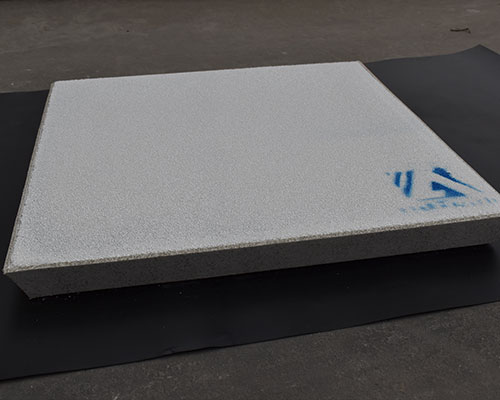The molten Al ceramic filters adopt the adsorption principle, which can effectively remove the large inclusions in the molten aluminum and effectively adsorb the small inclusions. No debris falls off, effectively reducing the pollution of molten aluminum. Excellent thermal shock resistance, improve the erosion resistance of molten metal. Automated production, 3 calibration procedures, precise dimensions. Improve surface appearance and performance, purify molten aluminum.
The standard size of molten Al ceramic filters: 7x7in 9x9in 12x12in 15x15in 17x17in 20x20in 23x23in 26x26in. Thickness: 50±2mm
The filtration efficiency of ceramic foam filter is closely related to its correct installation and use. At the same time, due to the filtration process, the conventional and necessary measures taken to reduce the occurrence of inclusions in process operations such as smelting, furnace treatment, and casting cannot be ignored. It is also necessary to prevent re-contamination of the filtered clean aluminum liquid.
Molten Al Ceramic Filter Installation and Use
1. Use the filter plate correctly:
The size of the filter plate and the number of holes must be selected according to the flow range of the specific casting type, the maximum level of the metal during the filtration process, the total filtration volume, and the cleanliness of the original aluminum liquid.
2. The pre-melting filtration treatment cannot be ignored:
Such as ordinary slag from aluminum melting furnace and holding furnace, cleaning furnace; furnace refining. In particular, an online degassing device is still needed, because it not only reduces the hydrogen content of the melt, but also removes some non-metallic inclusions.
3. The filter plate must be compatible with the square refractory block:
The two are suitable for sealing to prevent the metal from flowing into the casting box from the gap without being filtered, and also avoid the foam filter plate from floating in the aluminum water due to the lightweight.
4. Warm-up before use:
Preheat to remove moisture and facilitate initial transient filtration. Electric heating or gas heating can be used for preheating. Normally, it takes about 15 minutes.
5. In the normal filtering process, no slag is needed to avoid knocking and vibrating the filter plate. At the same time, the washing tank should be filled with molten aluminum, so as not to worry too much about molten aluminum.
6. After casting, drain the metal in the flow cell and filter plate.
7. Finally, clean the periphery and remove the filter plate after curing.

